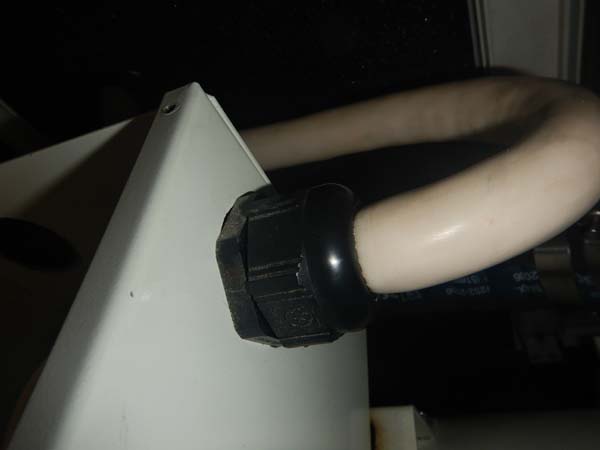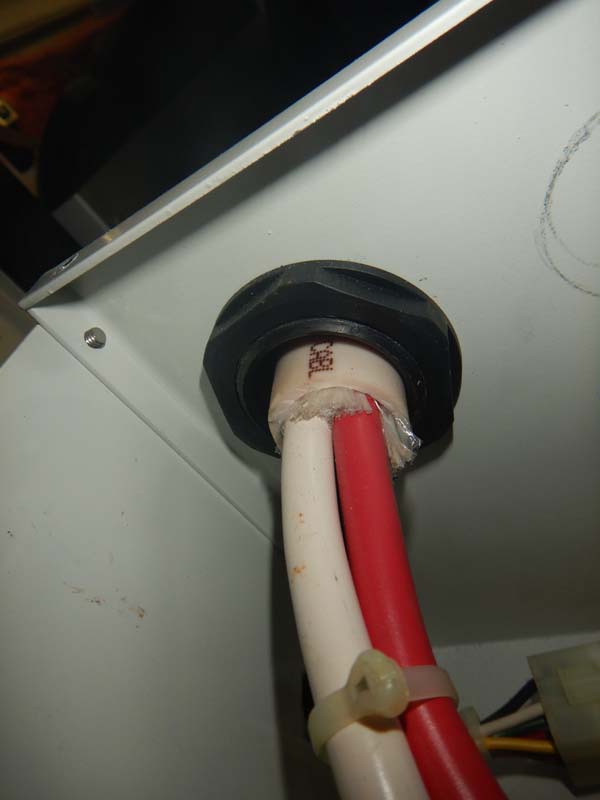Photo Essay: Generator AC Wiring
Of all the defects I encounter on generator installations, poor wire routing and support are among the most common. Generators are shipped from their manufacturers complete and ready to install, however, outside the “envelope” of the generator the boat builder or refit yard is tasked with wiring and plumbing the genset for battery/cranking power, fuel, exhaust and AC output. All of the wires and hoses associated with these systems are the responsibility of installers; including sourcing, design (especially important for exhaust systems) and installation.
Some genset manufacturers do a better job than others in making it easier for installers to do this right. I encounter gensets that have DC power studs, and raw water and fuel fittings attached to the outside of the enclosure, making hook up very easy. In other cases, far more responsibility is placed on the installer. In some cases, a genset’s design can make it downright difficult to comply with ABYC Standards, including and especially when it comes to installing AC wiring, and ensuring strain relief. ABYC Standards are pretty clear on the subject, stating, “Each lead provided for wiring to a generator set, or for interconnection between parts of a generator, shall be provided with a means to prevent stress from being transmitted to internal connections when subjected to an axial pull of nine kilograms (20 lb), applied for one minute, without any displacement.” Translation, if you yank on the AC wires, the stress you impart can’t be transmitted to the terminals. While that sounds simple, implementing it can be challenging if the genset manufacturer makes the hole for the wiring too small for an over-the-counter cord grip, which is often the case.
In the accompanying images, a savvy installer has made a new hole in the AC junction box, enabling him or her to use an off the shelf compression-style cord grip. It’s a textbook proper, ABYC-compliant installation, one that required effort that would not have been necessary had the genset manufacturer simply provided a slightly larger hole.
Ask Steve
Steve,
I’m doing some research on galvanic corrosion prevention and came across your article here. I had an idea that I’d appreciate your opinion on.
Would using an aluminum washer serve as an effective, if relatively temporary, cathodic protection method for cases where stainless steel fittings/ brackets/ etc. are bolted to a mild/ carbon steel plate in a marine environment? Or, would the washers just develop a surface film of Al2O3 and become inert? Have you experimented or had any experience with something along these lines?
Thank you for your consideration!
Alex Gilmore
Alex:
Generally, stainless steel and mild steel are mated up on steel vessel without significant issues; often stainless-steel pipe fittings are welded to the hull for thru-hull use. The anode to cathode ratio plays a role here, the anode, the steel, is much larger than the cathode, the stainless steel, which minimizes the incompatibility issue.
Rather than using aluminum washers, which would be sacrificial, and thus require replacement, it would be far better to use an insulator such as plastic or FRP. With this approach the two incompatible metals are isolated, and galvanic interaction is eliminated altogether.
Hello Steve,
Do any motor mounts need a specific torque? Further, does it need a formula?
Wayne Chandler
Wayne:
Technically, all fasteners have a torque rating, which is a function of their size/diameter, and alloy type. In practice, few, including professionals, use a torque wrench on motor mount installations. Torque charts are readily available on line. Having said that, because these fasteners, those that secure the motor mount to the vessel, and those that adjust the engine’s height, are so critical, it is imperative that they be secure, so there’s no reason not to use a torque wrench. For the lower adjustment nut, you’d need to use a crow’s foot attachment to use a torque wrench, which might be awkward, but it can be done. Above all else, if a motor mount is supplied with installation instructions, those should be followed to the letter.
Hello Steve,
I am trying to find any regulations or standards about the use of PEX tubing for a fresh water system on boats.
ABYC H-23 (Water systems on boats) talks about materials to use, but nothing specific for the use of PEX. The material must comply with EPA and National Sanitation Foundation standard (NSF 61)
I found from the internet a paper written by you about this where you are stating the same.
But, do we have any specific regulations coming from USCG or maybe a class society, i.e., ABS or DNV, where they specify better if it is possible to use PEX tubing in yachts?
Thank you very much in advance.
Best regards,
Nelson Aguirre
Nelson:
The Standards established by the American Boat and Yacht Council attempt to avoid prescription; rather they attempt to establish a protocol by which materials can be evaluated for use. This includes the following language…
23.6.3.2.5 plastic and rubber materials that comply with applicable National Sanitation Foundation standards and/or requirements of the Food and Drug Administration for potable water.
23.6.4 Flexible hose and nonmetallic tubing used for potable water shall be labeled with an indication that it is appropriate for use with potable water.
Provided the material you are considering meets these guidelines, it should be safe and appropriate for use aboard your vessel.
The US Code of Federal Regulations specifies the following rule for inspected vessels, “Plastic piping used for potable water shall bear the seal of approval or NSF mark of the Public Health, University of Michigan, Ann Arbor, MI 48103 (46 CFR 56.60-25(a)(4)).”
Classification societies also offer various guidelines, however, generally speaking, if the material is specifically rated for potable water, and/or includes “NSF61” it’s safe to use aboard your vessel.
For the benefit of readers, the potable water article can be found here.




